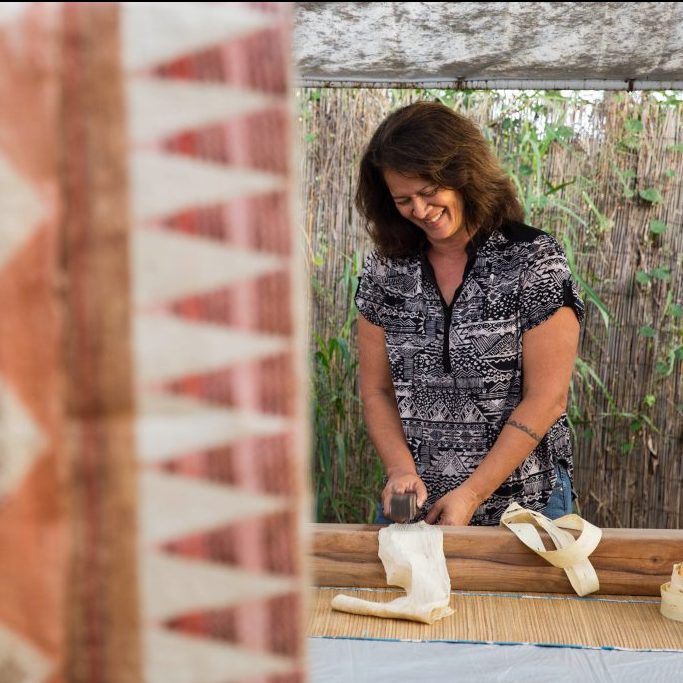“I am attracted to the many disciplines involved with Kapa such as: tool making, horticulture, graphic design, natural dye production, education, research, and the meditative rhythms of the beating itself. Through crafting my own tools, I am able to work with precious and wonderful natural elements such as smooth warm woods, hand-picked basalt pohaku, and ʻopihi shells. I become a scientist in the kitchen laboratory boiling up the bark, petals, leaves, and roots becoming the brilliant blues, greens, yellows, and an unbelievable rainbow of colors that our kupuna loved to place on their kapa. I save maile, tuberose, and pua keni keni leis from graduations to imbue inside the Kapa so that it can absorb the sweet subtle fragrance. One of the highlights of my kapa career was when I met Kahuna Kuku Kapa Pua Van Dorpe at her Kapa exhibit at the University of Hawai’i.”
Dalani Tanahy is a native of San Diego California with roots in Maui and O`ahu. She grew up spending her summers in La`ie and knew she would return to live in Hawai`i one day. As a child, she enjoyed the slow tedious work involved in crocheting, knitting, embroidering, and quilting. Dalani made her first i`e kuku and hohoa beaters over sixteen years ago through the help of Kawai Aona-Ueoka. Her first experience teaching Kapa started at the Cultural Learning Center at Ka’ala in Wai’anae. She found the perfect marriage of art and education by creating and sharing the art of Kapa and was inspired to start Kapa Hawaii. Kapa Hawaii teaches people about the types of Polynesian bark cloth collectively known as ‘tapa’ with a special emphasis on the tapa or ‘kapa’ made in the Hawaiian Islands.
“Kapa continues to be a personal journey for me as I teach and learn about this practice of our Hawaiian ancestors. Kapa making has given me opportunities to work alone quietly as well as encounter places and people throughout the world. It seems that I am on my second, third, and fourth circle now as I go forward with my work of teaching, cultivating and developing as a kapa artist. I am very pleased to be able to share some of what I have learned in the hopes of giving people a small appreciation of the seemingly simple yet complex work of my Hawaiian ancestors.”


